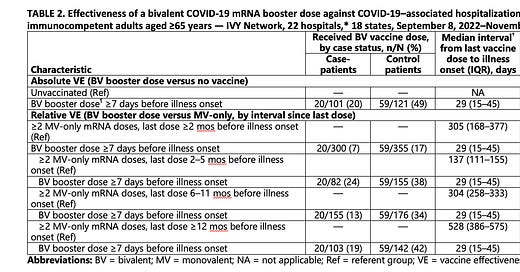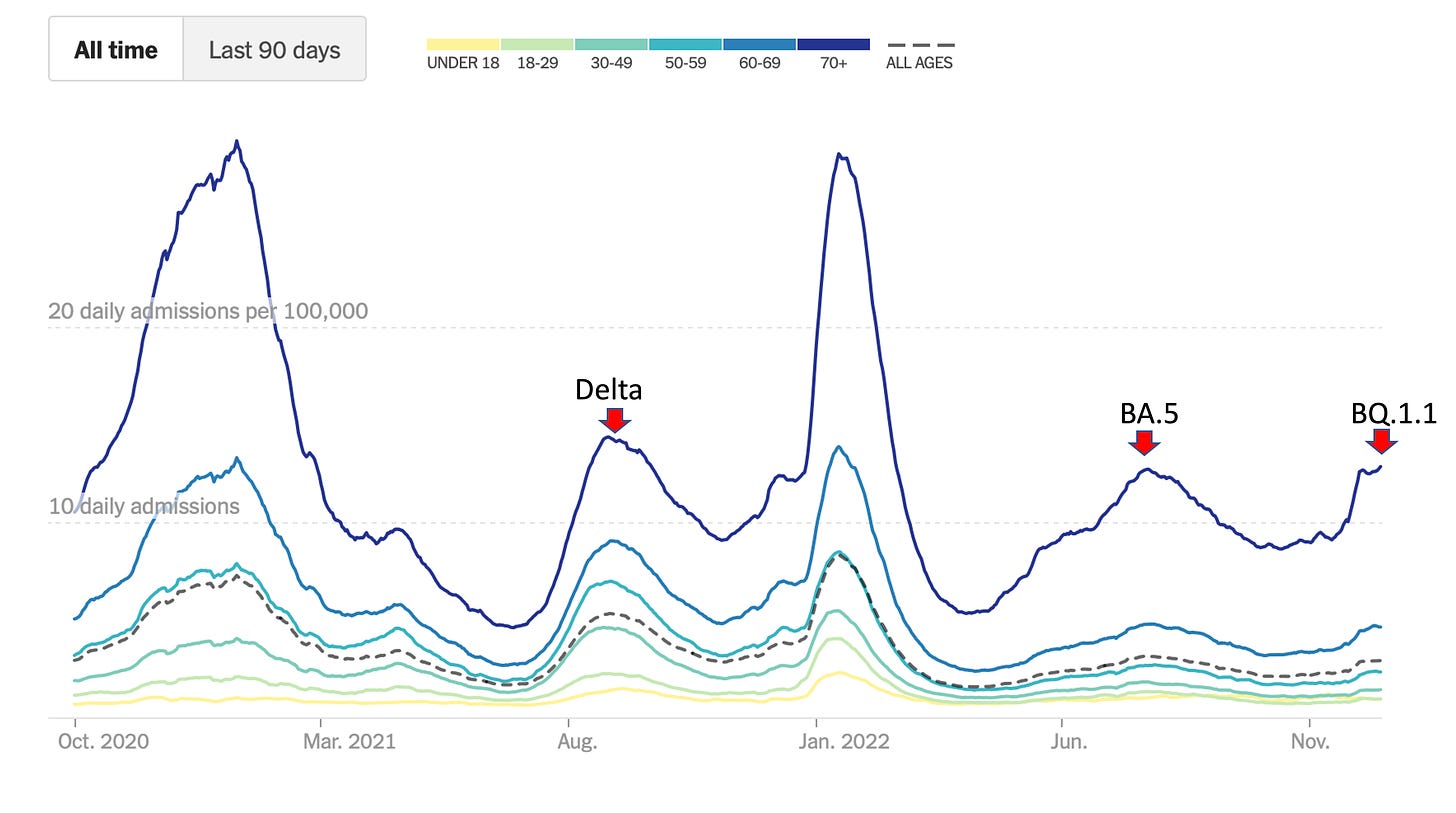A quick update on the bivalent boosters
New CDC data on protection posted today
With unprecedented speed during the pandemic for CDC, we now have vaccine effectiveness data for the bivalent booster (first administered September 4) through November 30th via 2 new reports today here (age 65+ vs hospitalizations) and here (all ages, vs ED and urgent care visits, hospitalizations).
The first Table summarizes the data for age 65+ protection against hospitalization. It shows very high level of vaccine effectiveness compared with either no vaccination or the original booster (monovalent), irrespective of time (2 to more than 12 months elapsed). This is welcome, great news providing reassurance for such strong protection (post estimates range from 73-84%) in people of advanced age. And remember that a significant part of the time assessed for protection was during the rise of the BQ.1 variants to dominance. The BA.5 variant has been fading for weeks, which started just as the bivalent boosters were released. So these new data also provide a window into protection against BQ.1/BQ.1.1 which is notable. That correlates with the broadening of immunity (neutralizing antibodies) seen in lab studies for the bivalent vs BQ.1.1, as I previously reviewed. Good stuff.
The other report contained data for all ages for protection vs emergency room and urgent care visits, and vs hospitalizations. Here is that Table showing the vaccine efffectiveness (VE, right column again) with lower levels of protection than for the high-risk seniors. But 57% reduced hospitalizations for all ages (compared with unvaccinated) is not anything to discount. Nor are the significant reductions of ER and urgent care visits, which are a softer outcome endpoint than hospitalizations. All of the data confirm that bivalent boosters work, and they work especially well in the people who need it the most—seniors.
It is important to emphasize that much of the data for vaccine effectiveness in the Tables above are based on comparison with people who have had multiple shots and boosters, along with infections. That the level of protection is this high—such as seen for seniors vs hospitalization—is all the more impressive.
But we aren’t getting American seniors protected. As of today only 36% have had a bivalent or recent booster. That same rate of fall boosters among seniors is ≥ 80% in the UK and in many countries in Europe and Asia.
This is showing up in what I’ve called the “senior wave” since hospitalizations among people of advanced age comprise the highest proportion than during any previous wave of the pandemic. We are well over 40,000 total Covid hospitalizations in the US now and that is quickly approaching the peak of the BA.5 wave. We’ll quite likely surpass that peak and the Delta wave peak in coming days. As seen below, several states, such as California and New York are already there. Deaths are starting to increase again after they fell well below 300 for the 7-day average. Like hospitalizations, nearly all are in the aged—and since >90% of seniors got 2 shots, most of these hospitalizations and deaths reflect lack of any or recent boosters.
So much of this is preventable. Boosters (now only bivalent) make a big difference, as do all the other tactics including KN95/N95 masks, testing, ventilation, and air filtration.
If you want to give a great holiday gift to any and all seniors you know, that could be life-saving or prevent a hospitalization, set up their appointment for a bivalent booster.
Thanks for reading, subscribing and sharing. With twitter in the midst of profound turbulence, your subscription is a good way to make sure you’ll get new posts directly via email.






